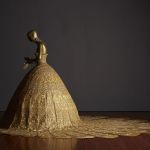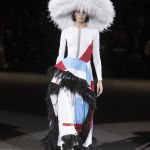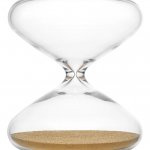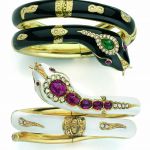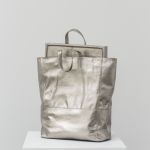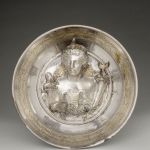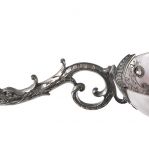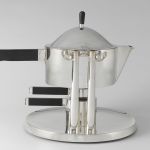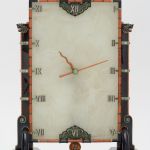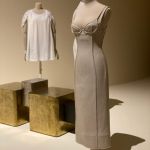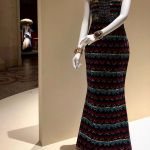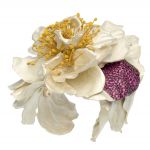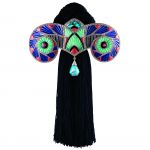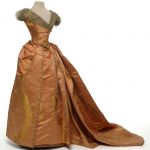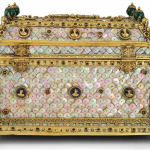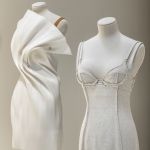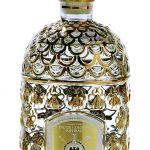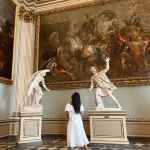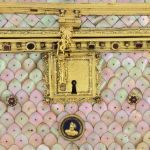
What is luxury today?
The new exhibition at the Musée des Arts Décoratifs in Paris explores the concept through over 100 historical artifacts
October 16th, 2020
After his epic 10,000 Years of Luxury exhibition at the Louvre Abu Dhabi, curator Oliver Gabet returns to investigate the nature of luxury through a new exhibition simply titled Luxes that will open today at the Musée des Arts Décoratifs in Paris, which he directs. The exhibition looks at luxury as the "a breeding ground for all paradoxes", capable of embodying both the most bleatable materialism and the most intangible psychological values of a civilization, but above all it is a lens to observe the evolution of society at the cultural level. After all, the organization of an exhibition on the subject and the reflection on the subject, assume a point of view on the already "external" to luxury - that is, the point of view of those who perceive luxury as a conglomerate of intangible values rather than material opulence the only true bearers of meaning in a world in which models of exponential growth and ideas of general well-being have crumbled.
In Luxes a story of luxury is told through a series of objects in a path that begins with the heavy jewelry-boxes encrusted with mother of pearl of the sixteenth century, passing through the elaborate jewels of precious headpieces of the Chinese Qing dynasty, arriving at the dresses designed by Karl Lagerfeld for Chloé and Chanel and up to the linen corsets of Jacquemus. A huge and very rich catalogue aimed at showing that, as Gabet himself explains to Designboom, "in a new society that would lack of nothing, luxury would be expressed in values or attitudes, more than in goods". A journey that, ideally, ends with the wonderful hourglass created by the industrial designer Marc Newson – as if to emphasize, like the ancient stoics, that the most sublime and unreachable expression of luxury it's time. A kind of philosophical and aesthetic question already explored with the Cartier-sponsored installation of the Abu Dhabi exhibition that represents the current and future luxury definition: a closed glass environment in which is placed a spiral staircase on top of which is suspended a cloud of perfume L'Envol by Cartier suspended that only those who have access to the installation can taste.
In the path designed by Gabet, luxury is observed from two points of view: one factual and one cultural. Whether it's the fine spoons made from polished shells from 16th-century Germany or the Goyard suitcase that belonged to the Duke of Windsor in the 1940s, a luxury item is an "eloquent and discreet" testimony of its time – a testament to the significance of luxury in the post-Covid world in which, more than at any other time, "the conception of a rewarding life can probably no longer be linked to the simple possession of an object of price". But even here, as Gabet reflects, the traditional concept of luxury is enriched with perspectives in the light of modern civil rights movements such as Black Lives Matter, which have highlighted how the production of luxury objects has often been based on practices such as slavery and the exploitation of millions of individuals. It follows that the value of an object then shifts from its cost of production or from the artisanal quality to more symbolic and historical values that are stratified within its meaning.
An exhibition that explores the concept of luxury through its many incarnations through time, following its progressive liberation from materialistic conceptions and its approach to the modern conception of the New Luxury – a concept that even fashion brands, today, care to cultivate by placing an emphasis on the curation of their communication as on their products, associating with their creative output entire systems of values and cultures. The transition from Frida Giannini's Gucci to Alessandro Michele's is, for example, one of the most emblematic moments of these shifts, as well as the entire communication system that Simon Porte Jacquemus (whose designs are also exhibited within the exhibition) has built around his brand, whose success depends almost more on the aesthetics that the designer has been able to evoke and channel through social media – in open break with the old guard symbolized by Karl Lagerfeld's design who, instead of Jacquemus's linen corsets, are represented in the exhibition by the opulent dresses of the couture shows of Chanel and Chloé.

















































